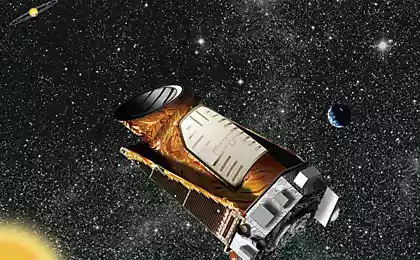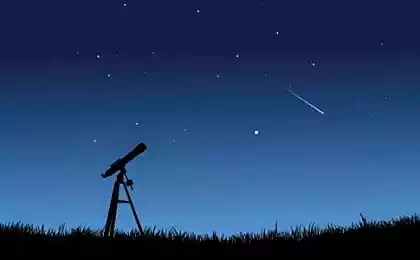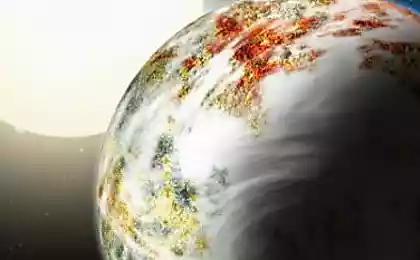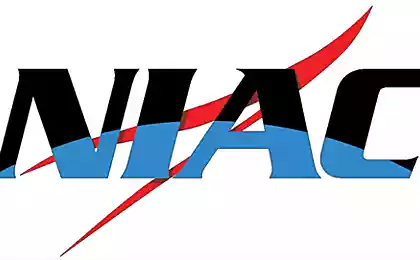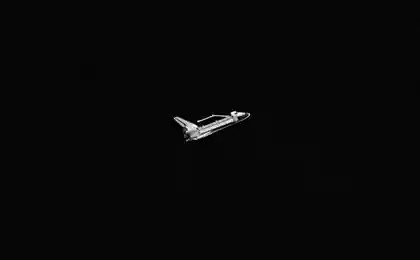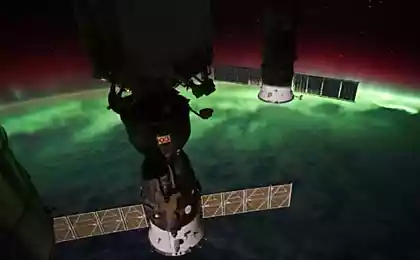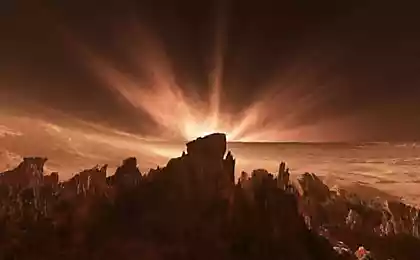1571
Starshade - search for habitable planets
Spacecraft in the form of a sunflower can help scientists find habitable planets. The device is in the form of sunflower called Starshade unfolds its petals, blocking the light from the star, and thus helps to space telescopes to take pictures of extrasolar planets surrounding the darkened star. This would greatly facilitate the task of finding "twins" of the Earth.
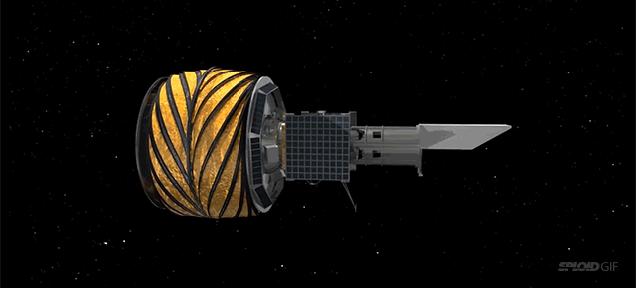
Starshade is still in its early stages of development. "This is a very high-tech shield in space», - говорит scientist from MIT, an astrophysicist and chairman of the scientific and technical teams NASA project Starshade Sara Seager. "It blocks the light from the star. Thus, the telescope gets only light of the world. Now everything works quite differently, telescopes see everything. What we offer is the only way to find a habitable planet with a relatively small and simple telescope, "- says Seager.
According to current estimates, the mission will cost about $ 1 billion, and will be able to explore the space of about 55 bright stars for 3 years. Seager believes that it is possible to find Earth-like planets orbiting 22 of the 55 planned for studies of the stars. One of the main advantages Starshade is that astronomers do not need to add to it in a couple of large and incredibly expensive space telescope. According to Seager, blocking the light from the star, Starshade eliminates the need for a huge telescope. "Using Starshade, you no longer need a huge and very tech telescope, which is thermally and mechanically stable," - says Seager. "In conjunction with Starshade, you can use any old space telescope. We can buy a telescope. In fact, this is what we are thinking. It sounds a bit funny from the lips of an employee NASA, but believe me, for this system you can use any telescope ».

Creating Starshade pose a serious challenge to engineers. While the telescope and Starshade can be run together, Starshade will have to fly away from the telescope when the unit reached outer space. "Basically, the concept of the project Starshade - this machine is 34 meters in diameter, which flies at a distance of about 37'000 km from the telescope" - says Seager - "It is difficult and even sounds crazy. Regardless of the ways to implement the mission, it is still very difficult. But it is also difficult to create a large telescope, which itself with the help of technology corrects starlight ».
Starshade itself must be designed with great precision, so that it can effectively block the light. Researchers at Princeton University in New Jersey, and NASA's Jet Propulsion Laboratory in California are working on testing models Starshade. "Our current task - to find out how to deploy Starshade in space so that all the petals eventually ended up in the right place with millimeter precision», - says Princeton University professor Jeremy Kasdin, principal investigator of the project Starshade.
With the help of Starshade scientists plan to find the atmosphere around the space objects. According to Seager, Kepler telescope and launched in 2017. TESS use the transit method (a space object is fixed at the time of passage on the background of the stars), and it can not detect a thin strip of the atmosphere around the objects.
Additional useful materials:
1. Expanded презентация Project Starshade (specifications of the machine, and the telescope optics, objectives, operating principles, circuits; angl.yaz)
2. Electronic book Starshade project manager in NASA, professor of MIT, Sarah Seager «Is There Life Out There - The Search For Habitable Exoplanets» (angl.yaz)
3. Recent posts about the discovery of new planets: 1) NASA: Found 715 new planets, 4 of them may be suitable for life ; 2) Oort Cloud - we are waiting for a lot of discoveries .
4. Division of NASA Exoplanet Exploration Program , responsible for research in the field of detection of exoplanets.
Source: habrahabr.ru/post/217727/

Starshade is still in its early stages of development. "This is a very high-tech shield in space», - говорит scientist from MIT, an astrophysicist and chairman of the scientific and technical teams NASA project Starshade Sara Seager. "It blocks the light from the star. Thus, the telescope gets only light of the world. Now everything works quite differently, telescopes see everything. What we offer is the only way to find a habitable planet with a relatively small and simple telescope, "- says Seager.
According to current estimates, the mission will cost about $ 1 billion, and will be able to explore the space of about 55 bright stars for 3 years. Seager believes that it is possible to find Earth-like planets orbiting 22 of the 55 planned for studies of the stars. One of the main advantages Starshade is that astronomers do not need to add to it in a couple of large and incredibly expensive space telescope. According to Seager, blocking the light from the star, Starshade eliminates the need for a huge telescope. "Using Starshade, you no longer need a huge and very tech telescope, which is thermally and mechanically stable," - says Seager. "In conjunction with Starshade, you can use any old space telescope. We can buy a telescope. In fact, this is what we are thinking. It sounds a bit funny from the lips of an employee NASA, but believe me, for this system you can use any telescope ».

Creating Starshade pose a serious challenge to engineers. While the telescope and Starshade can be run together, Starshade will have to fly away from the telescope when the unit reached outer space. "Basically, the concept of the project Starshade - this machine is 34 meters in diameter, which flies at a distance of about 37'000 km from the telescope" - says Seager - "It is difficult and even sounds crazy. Regardless of the ways to implement the mission, it is still very difficult. But it is also difficult to create a large telescope, which itself with the help of technology corrects starlight ».
Starshade itself must be designed with great precision, so that it can effectively block the light. Researchers at Princeton University in New Jersey, and NASA's Jet Propulsion Laboratory in California are working on testing models Starshade. "Our current task - to find out how to deploy Starshade in space so that all the petals eventually ended up in the right place with millimeter precision», - says Princeton University professor Jeremy Kasdin, principal investigator of the project Starshade.
With the help of Starshade scientists plan to find the atmosphere around the space objects. According to Seager, Kepler telescope and launched in 2017. TESS use the transit method (a space object is fixed at the time of passage on the background of the stars), and it can not detect a thin strip of the atmosphere around the objects.
Additional useful materials:
1. Expanded презентация Project Starshade (specifications of the machine, and the telescope optics, objectives, operating principles, circuits; angl.yaz)
2. Electronic book Starshade project manager in NASA, professor of MIT, Sarah Seager «Is There Life Out There - The Search For Habitable Exoplanets» (angl.yaz)
3. Recent posts about the discovery of new planets: 1) NASA: Found 715 new planets, 4 of them may be suitable for life ; 2) Oort Cloud - we are waiting for a lot of discoveries .
4. Division of NASA Exoplanet Exploration Program , responsible for research in the field of detection of exoplanets.
Source: habrahabr.ru/post/217727/
